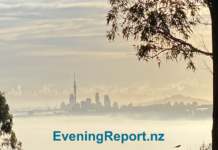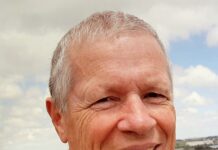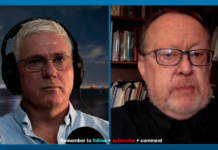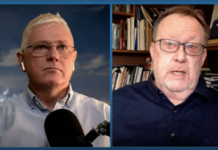Source: The Conversation (Au and NZ) – By Joshua Black, Visitor, School of History, Australian National University
At the last federal election, Australia elected the largest lower house crossbench in its post-war federal history.
In addition to four Greens MPs, Rebekah Sharkie from the Centre Alliance and Bob Katter (with his own micro-party), there were ten independent MPs, seven of them new to parliament. These MPs have the freedom and flexibility to vote on every piece of legislation without having to adhere to any party-room pledge.
Micro-parties and independents also fared well in the Senate in 2022, thanks in part to the fact that we use proportional representation to elect our senators. In a half-Senate election with 40 vacancies, six went to the Greens, one to Independent ACT candidate David Pocock, one to United Australia Party Senator Ralph Babet and one to Pauline Hanson in Queensland.
Defections during the 47th parliament grew the crossbench even further. Five former Coalition MPs and Senators have moved to the crossbench, one over allegations of sexual harassment, one over the Voice to Parliament referendum and three over bruising preselection defeats.
Senator Fatima Payman defected from the Labor Party last year, citing problems with the party’s stance on Palestine, and has now set up the Australia’s Voice party.Getting elected
Independents hardly enjoy a level playing field in federal elections. Brian Costar and Jennifer Curtin pointed out in their book, Rebels with a Cause, that independent candidates lack equal access to the electoral roll, do not initially benefit from the public funding that flows consistently to the major parties, and cannot be listed above the line on the Senate ballot paper unless they form a group or party.
Unless they are party defectors with a seat in parliament already, independent candidates also lack the advantages of incumbency. Previous research from the Australia Institute has shown the dollar value of an incumbent MP’s entitlements (in terms of their salary and those of staff, printing and travel allowances, public exposure), is about $2.9 million per term.
Once elected, though, Independents have shown the major parties that they can be very hard to beat. Helen Haines and her predecessor as Member for Indi, Cathy McGowan, have won four consecutive elections between them. Zali Steggall, who famously beat former prime minister Tony Abbott in the electorate of Warringah in 2019, has been re-elected once, and the people of metropolitan Hobart have returned former public servant and whistleblower Andrew Wilkie to Canberra five times in a row.
No safe seats
Political parties and journalists have conventionally treated certain seats as “safe” (if the winning party’s vote two-party preferred margin was 60% or higher), others as “fairly safe” (if the winning party’s 2PP margin was between 56% and 60%) and others as “marginal” (those won by less than 56% at the previous election).
But the days of safe and marginal seats are over. These terms belong to an age of two-party contests and more predictable preference flows. As Bill Browne and Richard Denniss of the Australia Institute have pointed out, the major party vote share has now “crossed a threshold” below which the idea of “safe seats” becomes redundant.
Independent candidates can win with a relatively low share of the primary vote. In 2022, community independent Kylea Tink won the electorate of North Sydney with 25% of the primary vote, having ranked favourably, but not first, on many voters’ ballots.
Holding on?
Several contests involving current crossbenchers may prove nationally influential in the event of a hung parliament. Tink, whose electorate has been abolished in a routine redistribution, will not be among the incumbents hoping to hold their seat.
The Liberal Party, by some accounts, perceives the Perth seat of Curtin, won by community independent Kate Chaney in 2022, as an important litmus test for the future. January saw a “surge in volunteers and donations” for Liberal candidate Tom White’s campaign, according to media reports.
Elsewhere, the Liberals are attempting to meet incumbent community independents with candidates that more closely resemble them. The Liberal candidate for Warringah, Jaimee Rogers, is, like the sitting member Zali Steggall, a former athlete with a public profile. Wentworth candidate Ro Knox, a former Deloitte consultant, will run against Allegra Spender, whose own pitch for re-election has emphasised tax reform and productivity.
In Victoria, Monique Ryan, who won the seat of Kooyong from then-treasurer Josh Frydenberg, will this time face Amelia Hamer, a local woman, professional and grand-niece of former Victorian premier Rupert Hamer.
There are exceptions to that pattern. Former RSL President James Brown was preselected as the Liberal candidate for Mackellar, currently held by community independent Sophie Scamps. And in Goldstein, there will be a rerun of the previous contest between community independent Zoe Daniel and her Liberal predecessor Tim Wilson.
At least three of the major party defectors in both houses are hoping to keep their seats, too. Gerard Rennick, formerly a Coalition senator who was denied a winnable spot on the Liberal National Party ticket, has registered the Gerard Rennick People First Party ahead of his bid for re-election this year. Rennick has pointed out that this will get his name “above the line” on the Senate ballot paper.
Former Liberals Ian Goodenough and Russell Broadbent have both indicated they will run as independents to defend their seats – Moore and Monash respectively – from their erstwhile colleagues.
Room for growth?
Despite the watershed result in 2022, the crossbench may grow yet. Fundraising group Climate 200 is reported to be backing up to 35 candidates across the country, and an army of volunteers has already begun to mobilise in support.
Health professional Carolyn Heise will hope that, with the support of the new campaign fundraiser the Regional Voices Fund, her second campaign in the regional electorate of Cowper may land her in parliament alongside Indi MP Helen Haines.
The retirement of shadow minister Paul Fletcher as member for Bradfield in inner-Sydney makes for a particularly interesting contest in that electorate. Gisele Kapterian, who won Liberal preselection against Warren Mundine, will campaign against community independent Nicolette Boele, who would need a swing of only 5% in her favour to win on her second attempt.
In Victoria’s western district, community independent Alex Dyson will attempt for the third time to win the seat of Wannon from shadow immigration minister Dan Tehan. Dyson came close in 2022 and would need only a 4% swing (two-candidate preferred) to win this time.
In 2022, community groups supported independent candidate Penny Ackery in her campaign against then-minister and now shadow treasurer Angus Taylor. The two-candidate preferred vote left the seat “relatively safe” (in old terms), but declining support for the Coalition saw the state electorate of Wollondilly (within Hume’s borders) elect community independent Judy Hannan in a “surprise win” at the 2023 state election.
There is plenty of potential for surprise victories and shock defeats at the forthcoming election. Community independents are running in at least four Labor-held seats. What should surprise nobody is that every vote in every seat will count on election day.
![]()
Joshua Black is a Postdoctoral Research Fellow at the Australia Institute.
– ref. Australia’s embrace of independent political candidates shows there’s no such thing as a safe seat – https://theconversation.com/australias-embrace-of-independent-political-candidates-shows-theres-no-such-thing-as-a-safe-seat-250751








